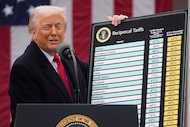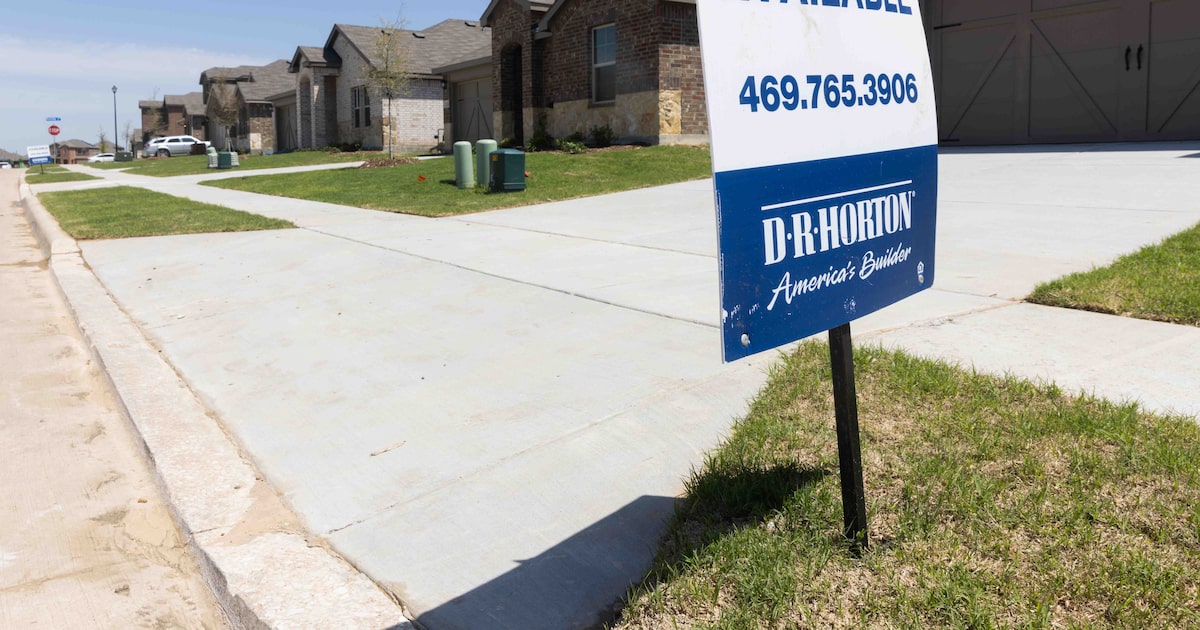After years of rampant growth and a strong summer, the Texas economy appears to have cooled this fall, according to a recent analysis by researchers at the Federal Reserve Bank of Dallas.
The cooling trend was evident in both the manufacturing and service sectors, the Fed researchers concluded in a survey published on Friday. They pointed to President Donald Trump’s trade policies as a major source of the weakness.
“Tariffs and the surrounding uncertainty continue to impact the Texas economy,” Luis Torres, a Dallas Fed economist who coauthored the analysis, said in accompanying comments.
“Nearly half of all the businesses surveyed are seeing their costs go up because of these tariffs, and over a quarter of them are passing those higher costs onto customers.”
Business Briefing
Related

“But there’s good news,” Torres added. “While firms anticipate continued pass through of tariff costs, a significant jump in pricing is not anticipated.”
Expanding but momentum ‘fading’
The analysis was based on data collected through the Dallas Fed’s widely watched monthly Texas Business Outlook Surveys, which include responses from representatives of hundreds of Texas businesses across different sectors. The surveys aim to provide regular insight into the Texas economy.
The analysis comes at a precarious time for the overall U.S. economy.
The federal government shutdown recently stymied data reporting for weeks, clouding economists’ understanding of inflation and the job market, among other key indicators. At the same time, whispers of a broader slowdown driven by tariffs, stagnant job growth and a potential bubble in artificial intelligence have grown louder.
Mark Zandi, chief economist at Moody’s Analytics, recently determined that 22 states ― including Georgia, Kansas, Massachusetts, Michigan and Virginia ― are already in a recession or at high risk of entering one.
Meanwhile 12 states are “treading water” and 16 are still seeing their economies expand “though their momentum is fading.”
Numerous sectors — including tech, finance, construction and manufacturing — have been shedding jobs, Zandi pointed out. “This state-level picture mirrors the national trend: the U.S. economy is not in a recession, but it is struggling to avoid one,” Zandi wrote.
Still, Texas — the country’s second-biggest state economy, representing more than 9% of overall U.S. GDP — was the largest state economy to fall in Zandi’s “expanding” classification.
That assessment reiterates a commonly held belief among economists that Texas ― which has been an economic success story for years ― remains relatively well-positioned compared to the country as a whole.
But even the Lone Star State’s booming economy has been tempered recently. Overall, the state saw limited hiring in September and October, the Dallas Fed analysts determined based on data the reserve branch collected. The surveys suggested the manufacturing sector managed modest growth in October, while the services sector saw slight net job losses.
The service sector reading was actually the worst the state has seen since July 2020, with 27% of respondents reporting a decrease in revenue and 18% reporting a decrease in employment. Both figures outpaced the percentage of respondents who reported increases.
Many respondents laid the blame on federal policies, citing damaging impacts from the recent government shutdown, reduced immigration and general volatility surrounding the Trump administration.
Tariffs, though, emerged as the biggest theme. More than seven months after Trump’s “Liberation Day” announcement first upended the global trade system, the historically high import taxes continue working through the American economy, and many Texas businesses have reported more pressure on their businesses from higher input costs.
Those impacted businesses said they expect prices to hike only slightly more over the next year, providing something of a silver lining, although survey respondents also reported that they’re worried about a drop in demand due to inflation, policy uncertainty and declining immigration.
In September, around half of respondents also said they’re worried about a potential recession, several percentage points higher than a year earlier.
The impact from tariffs has also emerged as a frequent theme among businesses around Dallas-Fort Worth, a region with a particularly trade-heavy economy: At a forum hosted by the Fort Worth Chamber of Commerce last week, trade experts advised businesses to go ahead and take action to try to reduce their own costs.
“There used to be a time to say, ‘Let’s see how much pain this causes us, and we’ll see what we’re going to do,’” Shane Williams, a Houston-based managing director of global trade at Ernst & Young, told the audience. “The time to kind of wait it out and see is kind of over.”
